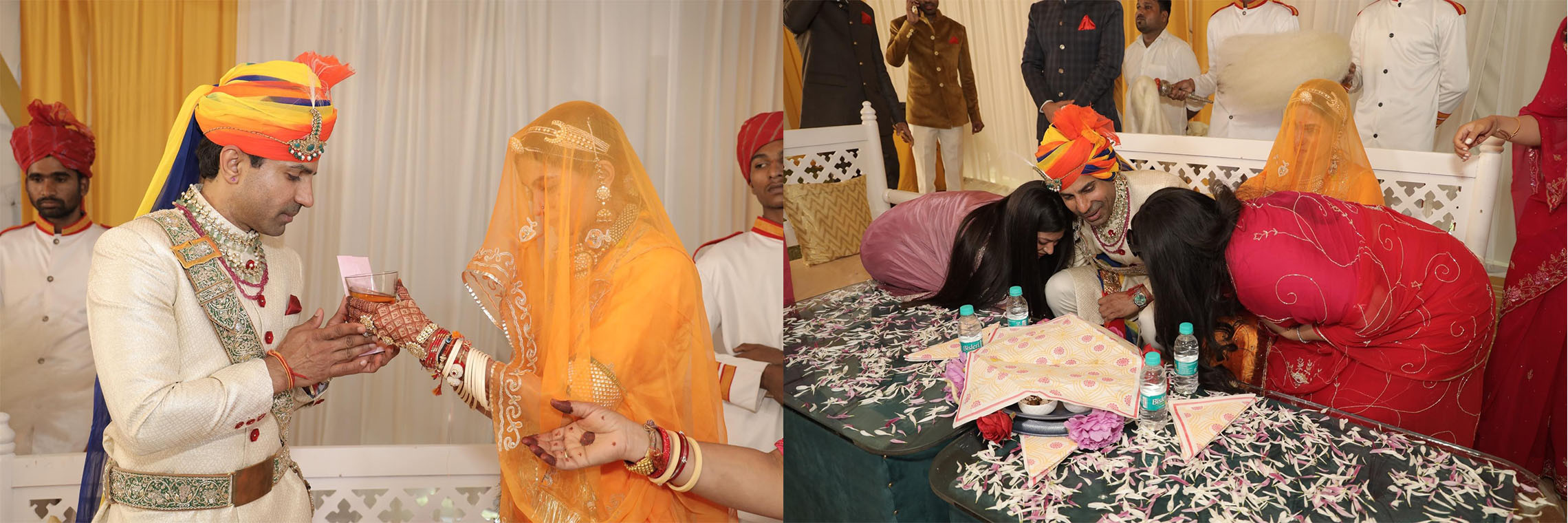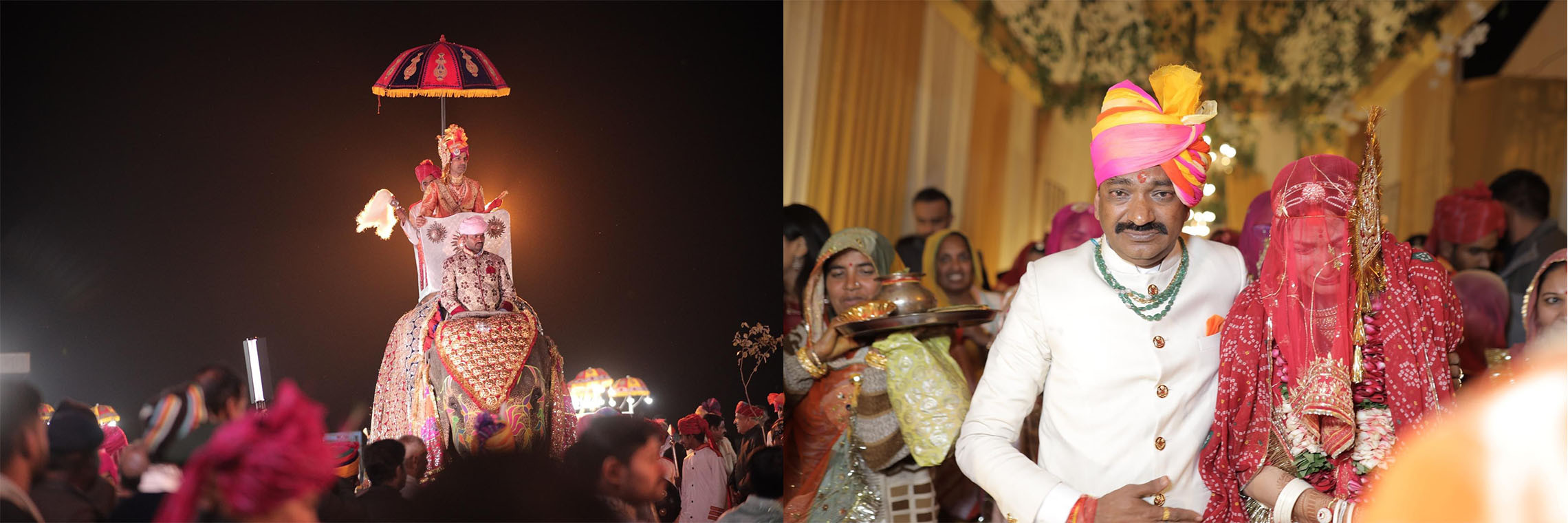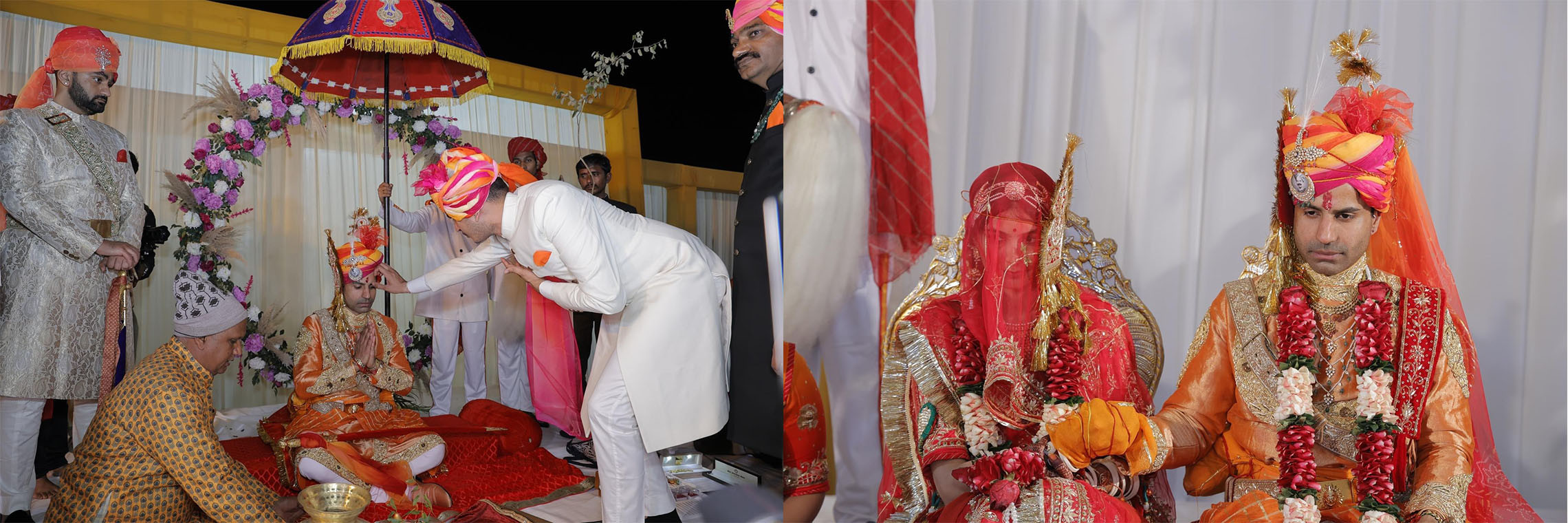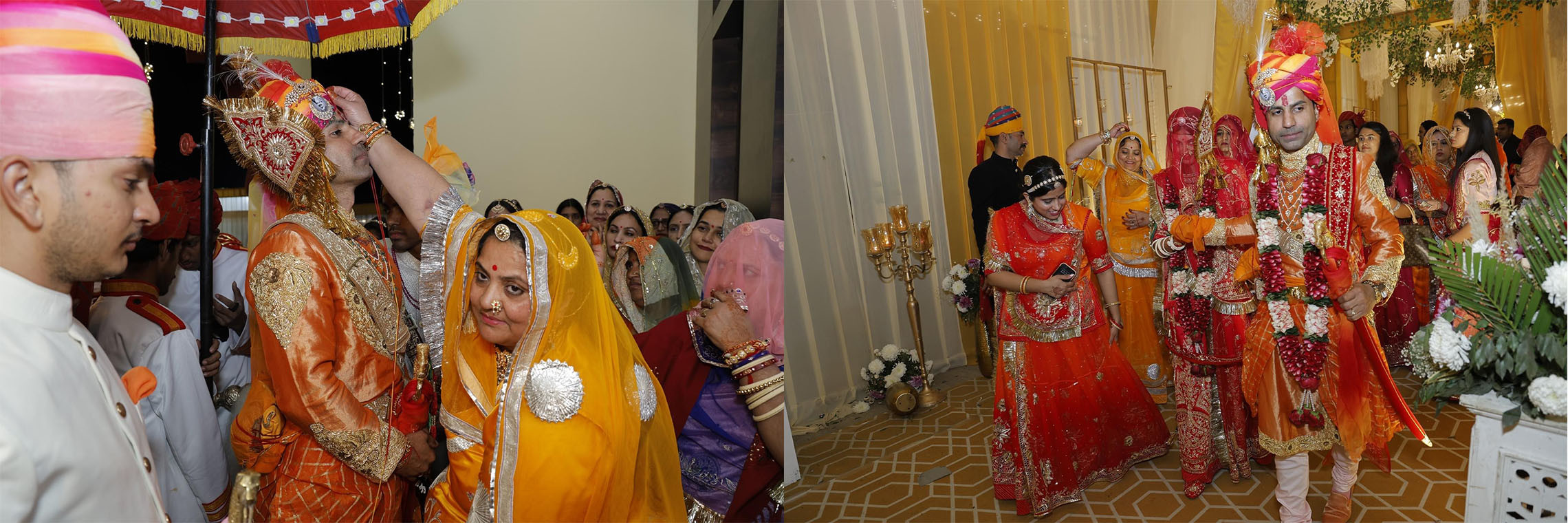Fifty-five-year-old Nirbhat Singh Sodha Rajput lives in village Maoo, approximately 10km northeast of Khipro city, district Sanghar, Sindh.
He is a member of the Veersi Sodha Rajput community, comprising a hundred families that live in villages such as Rar Mau, Phullaho, Jeenhar, Ranaho and Rablao, situated in close proximity to Khipro city. “We do not marry our sisters and daughters in Pakistan,” he shares. “We have married all our girls across the border in the Jaisalmer, Jodhpur, and Barmer in India. These girls are married into a sub-caste of Rajputs which do not live in Pakistan. Out of these, only two marriage processions came from India to my home.”
Only financially and socially well-off families as that of Nirbhat Singh can afford to have marriage processions arriving from India. Most Indian Rajputs do not agree to pay visa and transport expenses for marriages in Pakistan because they have a lot of their relatives living in India, and marrying in Pakistan is not the option for them.
Hindu Sodha Rajput is an ancient tribe of Thar Desert who have been living in Thar Desert for centuries. There are 36 different sub-castes in Sodha Rajput and Veersi is a sub-caste.
Partition and the war of 1971 has divided the families of the Sodha community, because previously, the Muslims and all castes of Hindus from Thar, Umerkot, Sanghar and Khairpur districts were socially and culturally connected. But after the partition and the 1971 war, they became divided into two parts in two countries.

While they may be divided in various ways, the Rajputs of Sindh still strongly maintain their cultural practices, particularly in the realm of marriage. The sub-castes of the Rajput tribe such as Veersi, Gangdas, Ram, and Sultan who still live in Tharparkar, Umerkot, Sanghar, and Khairpur districts marry their daughters, sisters, and sons off into Jaisalmer, Jodhpur, and other different states in India. It is notable that as per their religion, the Rajputs do not marry into close relatives.
Dilpat Singh Sodho is a 28-year-old engineer and lives in village Phulio. “These weddings are unique and different from other weddings in the region as well as the other Rajput tribes of Sindh,” he shares. “This is because no wedding events are arranged in Pakistan nor does a wedding procession from Pakistan goes across the border. The entire wedding with all celebrations and events is organised in India. Only the parents of the groom or bride accompany them, and in some cases, a brother or uncle is included.”
Sodho claims that previously, all grooms were from India. But after partition, only a few wedding processions from India came to their villages. “After three decades, we are marrying grooms from Umerkot and Tharparkar,” he says.
Cross-border marriage is not an easy process for them as there are complicated immigration related problems between India and Pakistan. Firstly, the challenge lies in obtaining a visa. Secondly, there is the prevalent issue of the substantial dowry culture that plagues Indian society. Thirdly, there is the requirement to stay there for two or three months for the marriage process.

"Getting a visa from the Indian Embassy is extremely difficult and time-consuming,” explains 35-year-old Nipal Singh Sodha. “A sponsor is required from India. About 70 percent of our close relatives live in the rural areas of India, while sponsors are required from urban areas. Secondly, a gazetted officer is required to attest our document. Since our relatives live in villages, the urban-based officers do not agree for attestation of our documents. When relations between India and Pakistan are disturbed, obtaining visas becomes even more difficult for us. For instance, no one got a visa during the pandemic, from 2018 to 2023.”
Culturally, they are prohibited from residing in their daughter's or sister's home. Consequently, during wedding festivities, they must either stay with distant relatives or in a hotel, which can be either expensive or inconvenient.
There is also a demanding financial side to these cross-border marriages. “Marrying girls into India is more expensive as compared to getting them married here because the parents of the Indian grooms demand dowry from the girl's parents,” shares Nirbhat. “The groom makes unlimited demand for jewellery, cash and car etc. Some want the wedding to be arranged in renowned hotels. To be able to afford a high-end wedding in India, we sometimes have to sell our land, livestock, and other things so that the demands can be met.”
“Even after being married in India, the brides do not become Indian citizens because getting citizenship in is not easy for them,” points out Nipal Singh. “Most of our girls remained Pakistani citizens all their lives.”

Before the war of 1971, the border was open so it was easier to across for marriages and the grooms would arrive with the marriage procession to marry our girls.
Mostly, they used the Thar Express train route for travel from Sindh to Rajasthan and Jaisalmer. The train track through Khokhrapar to Munabao was convenient as most of their relatives reside close to the railway track. When this route was open, they would reach their destination within a day or two.
After the closure of this route, the Wagah border was used despite being farther away and expensive. The Khokhrapar-Monabao train ran weekly, and the travel time from Karachi to Jodhpur would be 24 hours.
The closure of the Khokhrapar-Munabao railway track has created a lot of difficulties for us as we cannot go to see our relatives easily.”
After the wedding, they leave the newly-wed brides in their new abodes and return to Pakistan. Post-wedding, some girls never come back to Pakistan for a visit, neither can their family here visit them easily in India.

“It is not easy for us to marry our daughters across the border, but we have to because almost all our relatives live in India,” says Nirbhat Singh Sodha. “Once they are married, we never celebrate Holi or Diwali together. They cannot return when their parents or close relatives die. We miss them all the time. Internet keeps us connected through social media, especially on WhatsApp. That is how we attend each other’s important events and occasions.”
While many girls married off to boys in India participated in their brothers’ wedding ceremonies on Whatsapp, there are also many sad tales of daughters witnessing their fathers’ burial and funeral ceremonies on the app.
Interestingly, when a groom from the Sodhas in Thar marries into a well-to-do family across the border, the brides are mostly unwilling to live in Pakistan. “The reason for this is the difference in Indian and Sindhi culture,” says Nipal Singh.
Indian society is more flexible than Sindhi society, and Indian females are more independent as compared to Sindh. In India, females go to the market without any hesitation, which is not possible in rural Sindh. In India, females are doing government and private jobs, but in rural Sindh, it is not easy for the Rajput tribe because they belong to the upper class and do not like to send their women to work.

On the rare occasion that the Pakistani brides wedded in India return home for a visit, there is a great deal of celebration in the village. “We celebrate this wonderful occasion with Marwari folk songs,” shares Nirbhat Singh. “All the village women come to visit the girl staying at her parents’ house and brings gifts for her. They also arrange a festive meal for the girl’s family. She is treated as though she is not just a guest at her parent’s home but a guest of the entire village. The village becomes one family for her.”
Slowly and steadily, an immigration of the Sodha community is taking place from That to Rajasthan in India.
“We are not willing to leave our homeland,” says Dilpat Singh Sodha, an engineer. “Here, we live with courage and respect, our neighbours are respectful and generous and we are all bonded strongly without religious or social discrimination. However, our relatives are slowly migrating from here every year and our community is becoming smaller. Every family is divided into two parts, so living here is difficult in that situation.”

Indians do not migrate to Pakistan because most of their relatives live in India. They are well settled, their religious affiliation is with India, where most of theirs holy places are located.
The majority of Sodha Rajputs are involved in agriculture, working their own land to make a living. Others raise livestock, while some community members run businesses in Khipro and other Sindhi cities. Government and private sector jobs are less common within the community.
Being nature lovers and culturally distinct, the Sodha Rajputs stand out compared to other communities in Thar. They serve as the cultural identity of the Thar desert and are highly respected by the local residents.
But for this unique community, on one side is their allegiance to their homeland, and on the other side are blood relations. The choice is not easy.
Khalid Kumbhar is a freelance contributor
All facts and information are the sole responsibility of the author
